Masaya – Staring Into the Gates of Hell
At the end of my last post on Granada and Los Isletas I promised that on the next post we would travel to Ometepe Island in Lake Nicaragua. I lied; I’ve decided to go to hell instead. This is day two of our sojourn in Nicaragua as part of Adventures Abroad Central America tour designed and led by veteran guide Victor Romagnoli who has spent a great amount of time in many of the seven countries on this tour. Adventures Abroad is returning to Nicaragua for the first time since the uprisings of 2018 that were brutally suppressed by the Sandanista regime and so far everything is copacetic. Let’s hope it stays that way as we head for the nearby city of Masaya and its active volcano of the same name, which the Spanish on first climbing to the rim and looking down, likened to the Gates of Hell.
Masaya city is only 14 kms. (8.6 miles) from Granada and is actually the third largest city in Nicaragua. It is most famous for its enclosed market which we stopped at briefly and I was not impressed. Most of what was for sale was the same from booth to booth which tends to make me think it is not a local product, but possibly made in you know where. Over the course of this Central American adventure we visited many markets that were much more lively, colourful and authentic than that of Masaya. The real reason to come here is to visit the volcano which is just on the outskirts of the city.
Masaya Volcano National Park
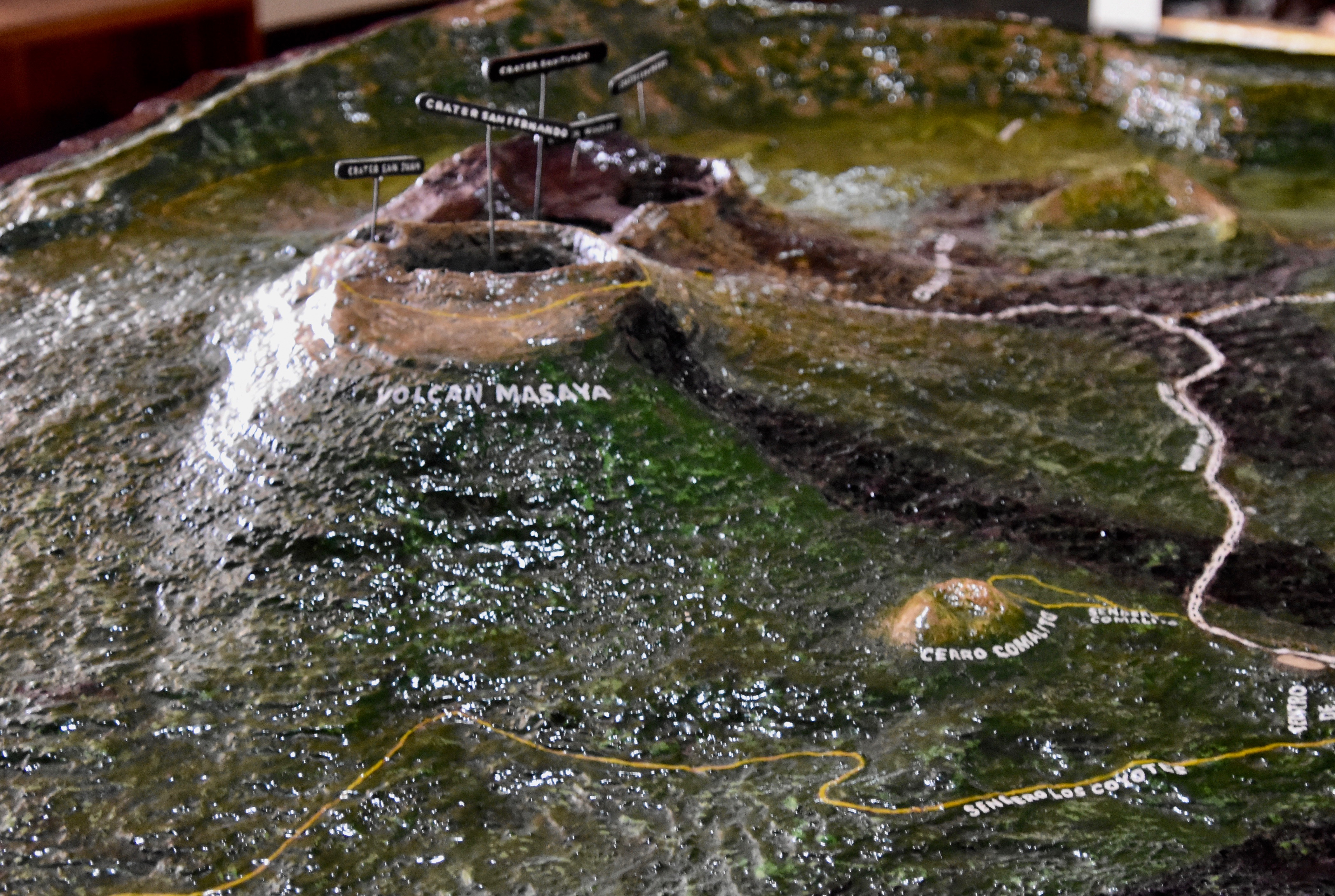
Masaya Volcano National Park is the first and largest national park in Nicaragua, but it’s still quite tiny at only 54 km² or just over 20 square miles. We’ve just come from Costa Rica where national parks and refuges abound and cover more than 25% of the country so Nicaragua has a lot of catching up to do. I can only hope that the government realizes the value of preserving what wild spaces and unique biomes it has left – at least Masaya volcano is a start.
After paying the entry fee our bus heads up the side of the mountain to the interpretive centre which is well worth visiting. Here our excellent local guide Aura Munguia gives us the history of the volcano and its relationship with the local people who have lived in its shadow for thousands of years. As an active volcano Masaya would erupt with unpredictable frequency which not surprisingly made it an object of fear and reverence for these pre-colonial peoples. It is reported that human sacrifices, especially of children, were made to abate the fury of Masaya and that is what is depicted in this painting. The spirit of Masaya is depicted as a horrible witch that needs to be appeased and the children on the right are the objects to be sacrificed.
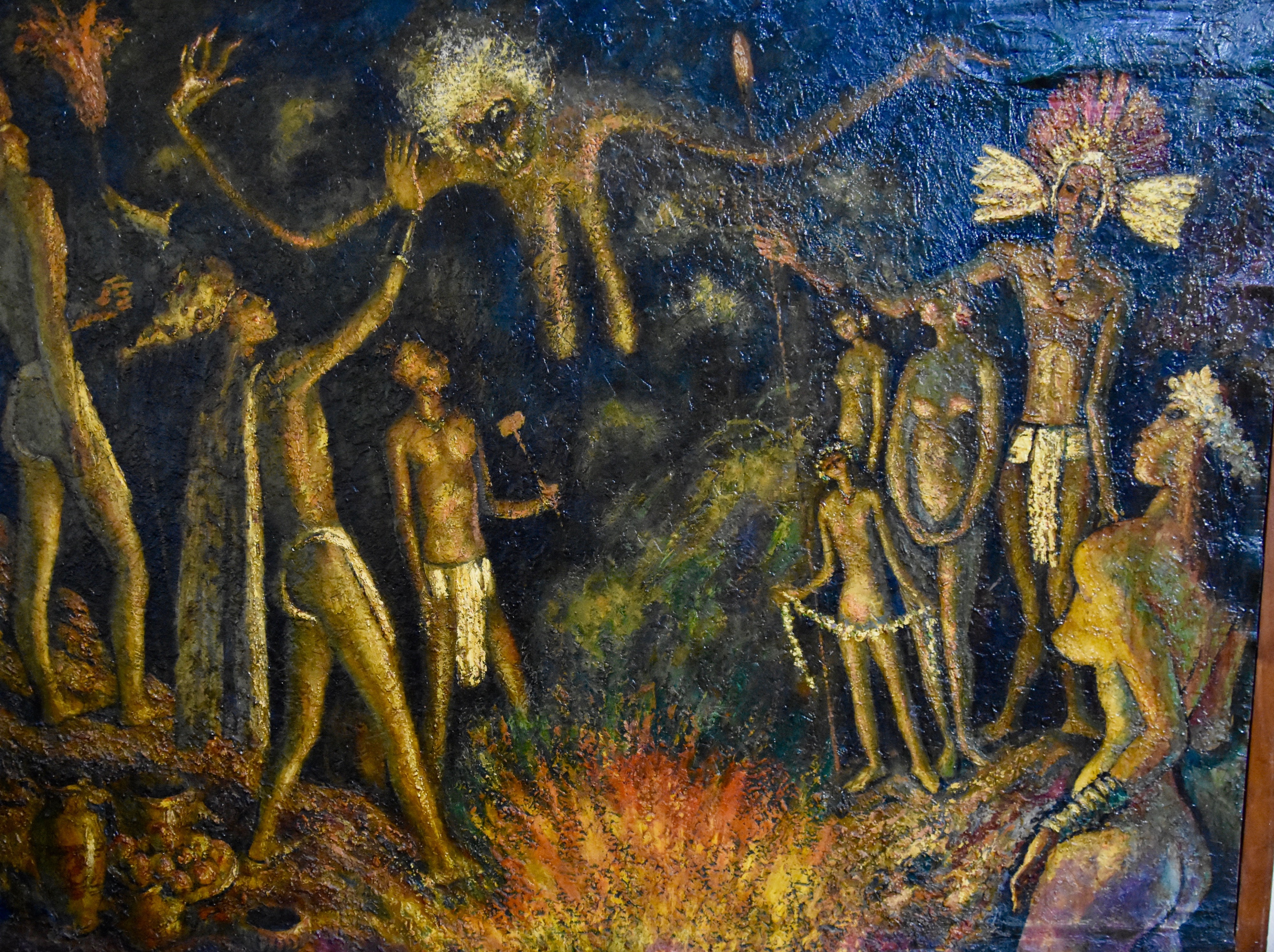
Pedro Arias Dávila, the same guy who ordered the beheading of the founder of Granada and Leon, Hernandez de Cordoba, initiated Spanish conquest in the Masaya area beginning in 1524. The Spaniards were no more able to protect themselves from the volcano’s eruptions than the Indigenous peoples. This huge mural depicts an eruption of 1670 when Jesus was called upon to stop the flow of lava. I don’t know if that worked or not, perhaps it was the barking of the dog that did the trick.
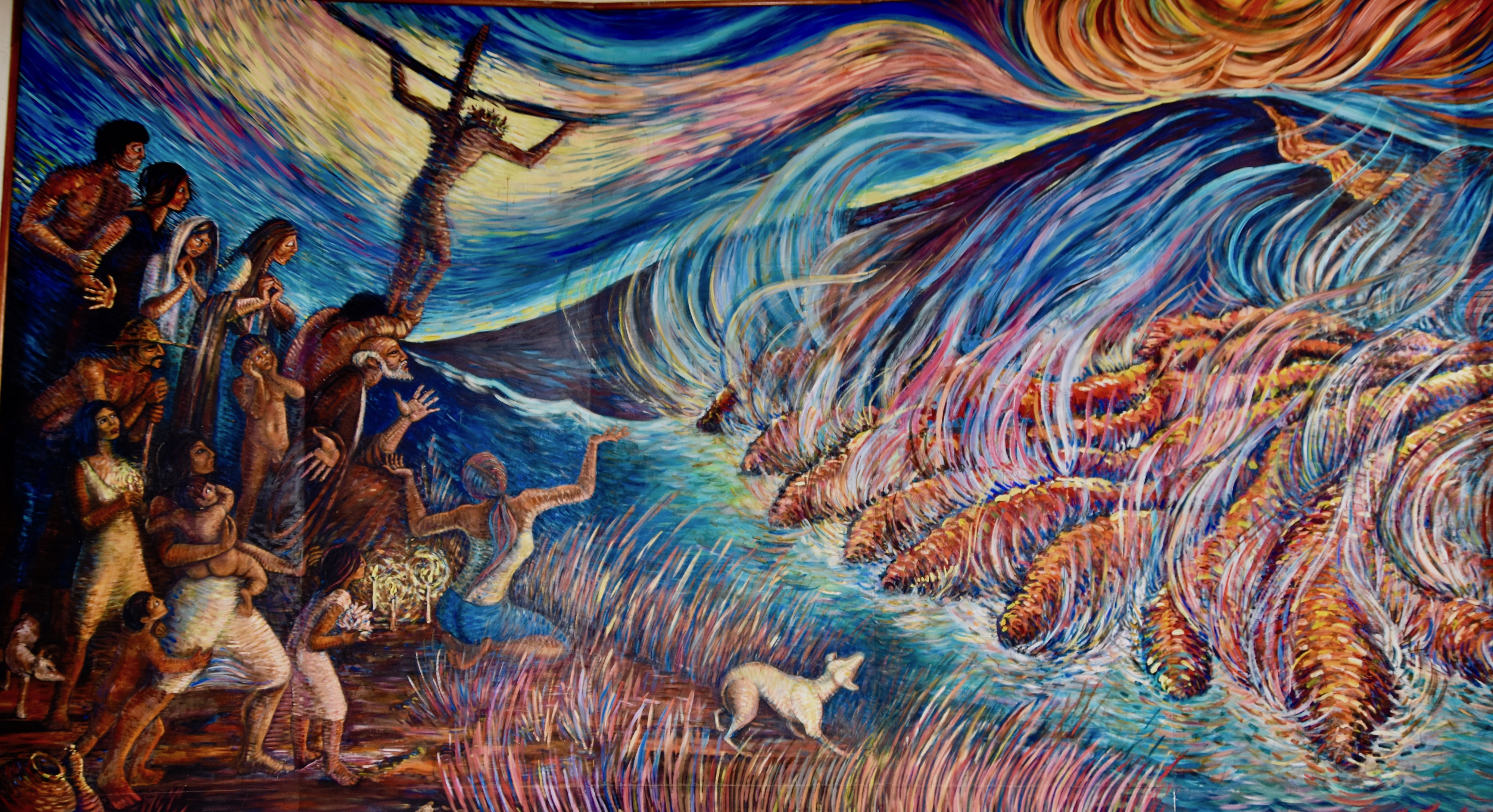
Also of interest in the interpretive centre is this model of the Nicaraguan portion of the Central American Volcanic Belt which is perhaps the defining natural feature of this country, El Salvador and Guatemala. Over the next few weeks we will be visiting or at least seeing many of the most famous of these Central American giants.

During our visit to Los Isletas Victor spotted bats sleeping on the upraised keel of a sailboat and today one of the group spotted these bats hanging from the ceiling in a darkened area. There are 94 species of bats in Nicaragua and they are vital for insect control and flower pollination. Unfortunately the fact that three of the species are true vampire bats has caused people to overreact and persecute all bat species, not only to their detriment, but ours as well. Only belatedly are countries like Nicaragua realizing just how important bats are to a healthy environment. The fact that these have been left alone here is a good sign.
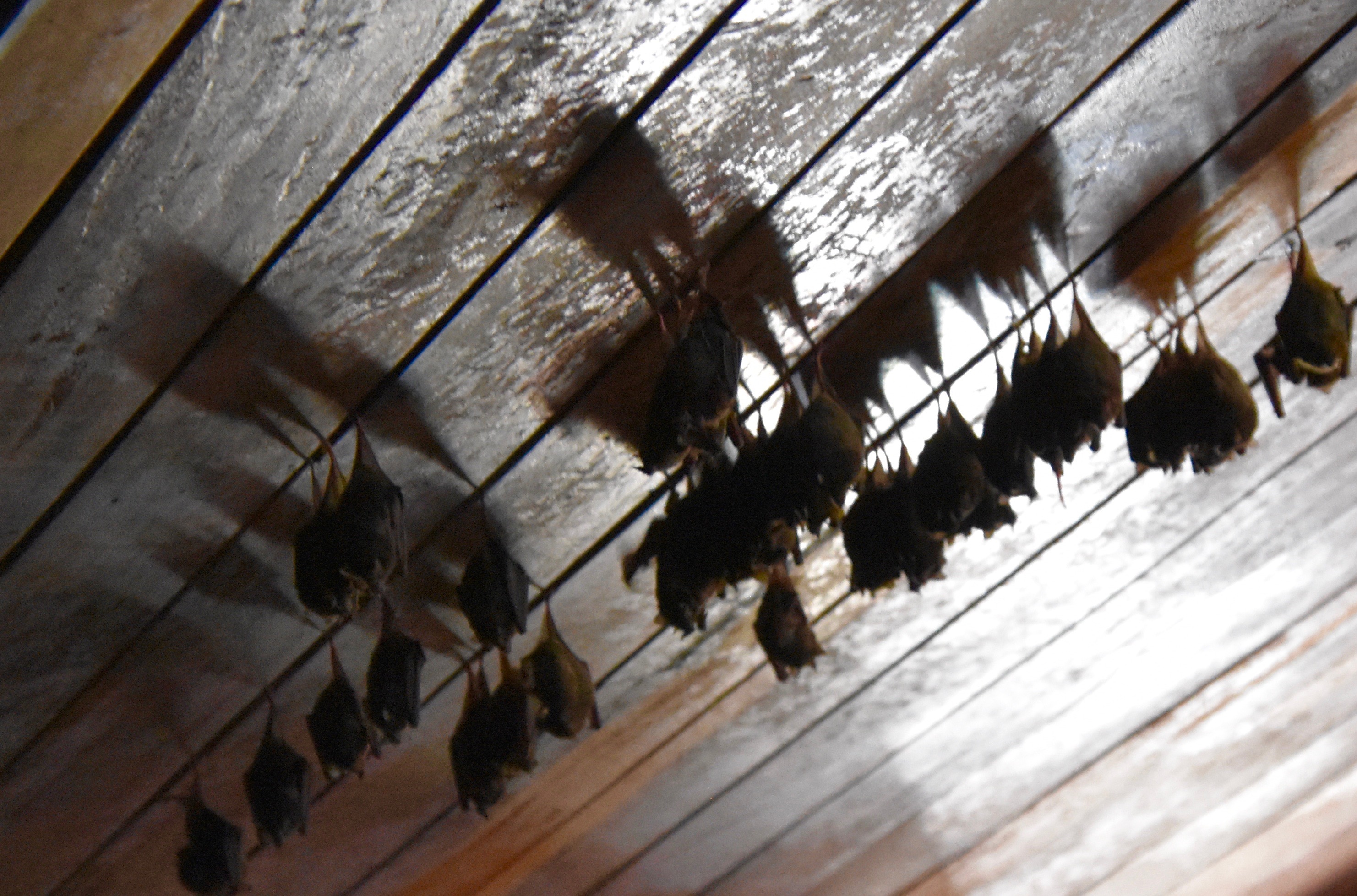
Boarding the bus we take the winding road that goes right up the a parking area just below the rim. Along the way there are telltale signs of recent eruptions like this lava flow that occurred quite recently.
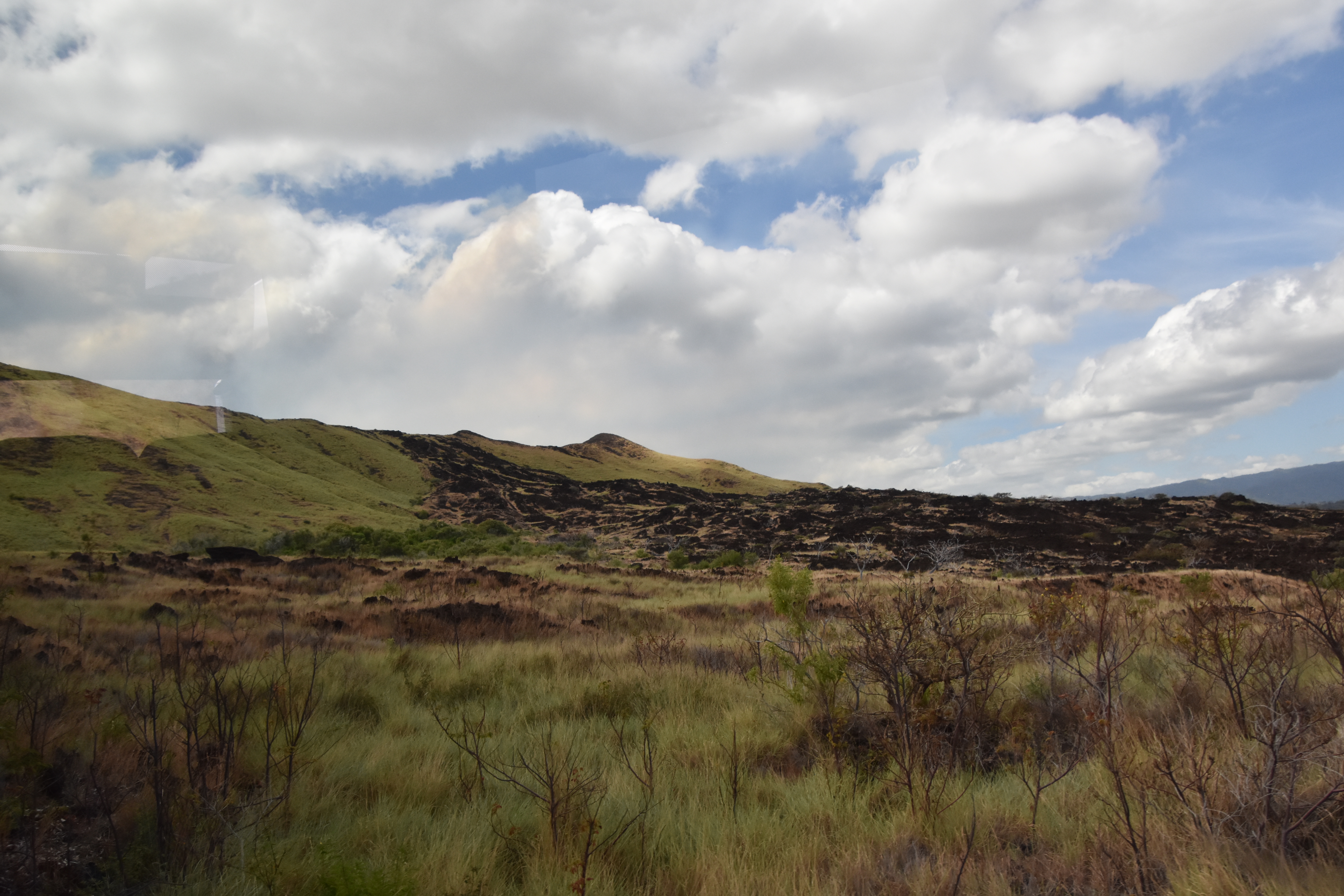
Masaya is not a prepossessing volcano to look at like Concepcion on Ometepe Island or Momotombo; in fact it’s only 635 metres (2083 feet) high. It’s claim to fame is that you can stand on rim and actually look down and see the steam rising from the vents. Yes, you are standing on the very edge of a live volcano and this is what you see.
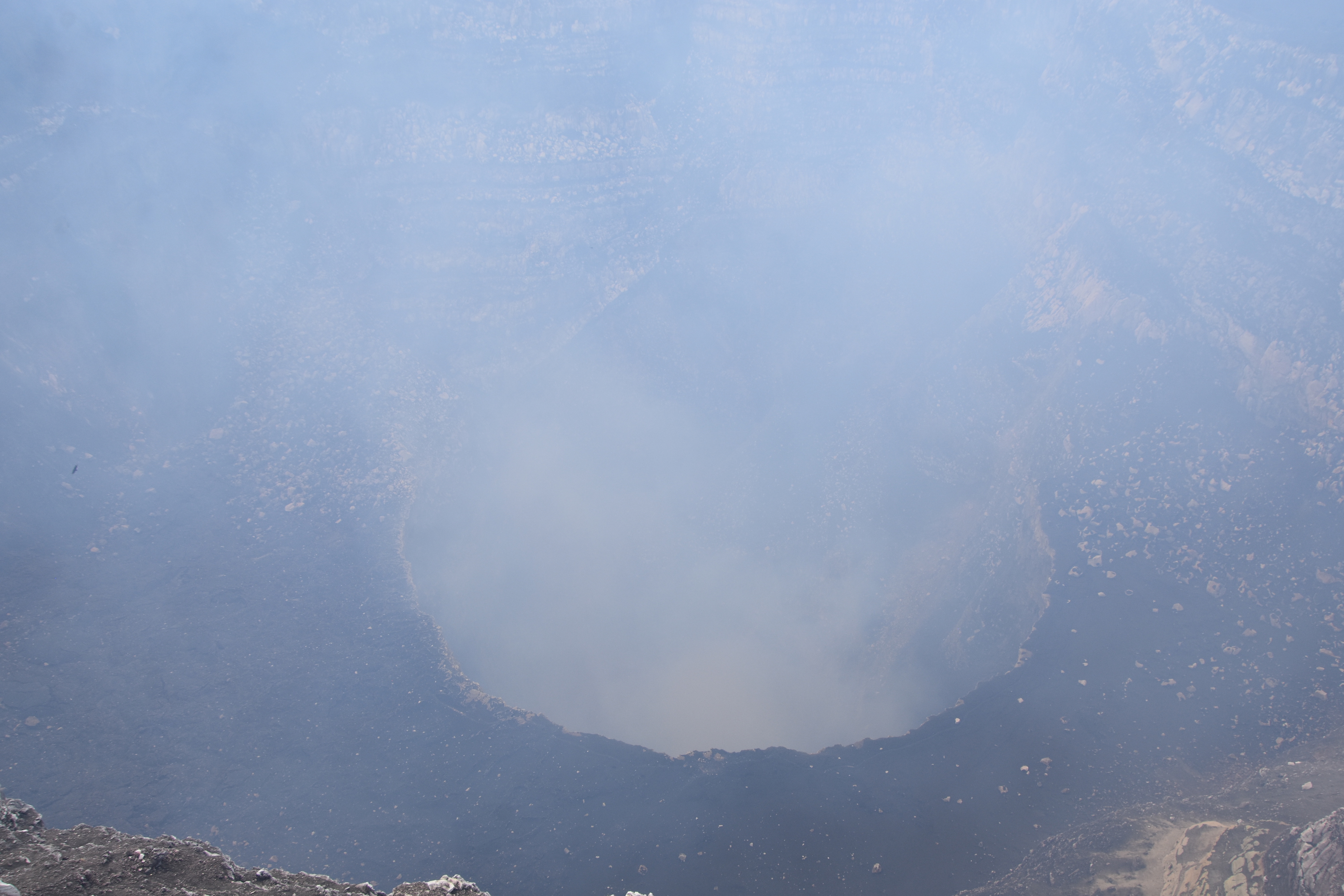
I think this short video gives a better idea. Not sure who I was talking to at the end, but I think you’ll agree this is a pretty cool experience.
Here is a photo of some of the group at the crater’s edge. Like many of the places we have and will visit in Nicaragua, Masaya, despite being high on the list of must see attractions in Nicaragua, is virtually deserted.
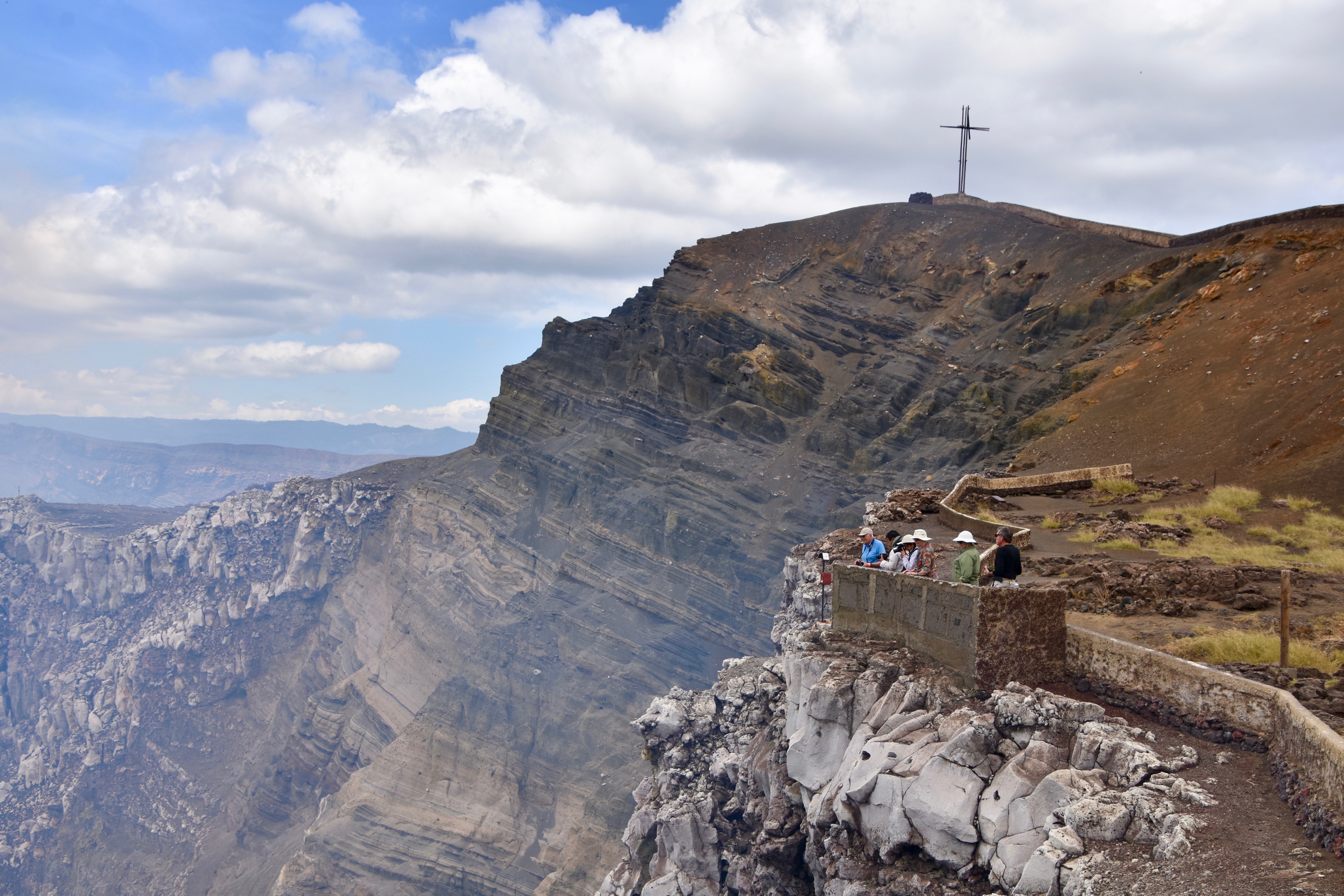
The trail to the cross on top of the hill is currently closed, but there is another trail you can take to get a higher viewpoint.
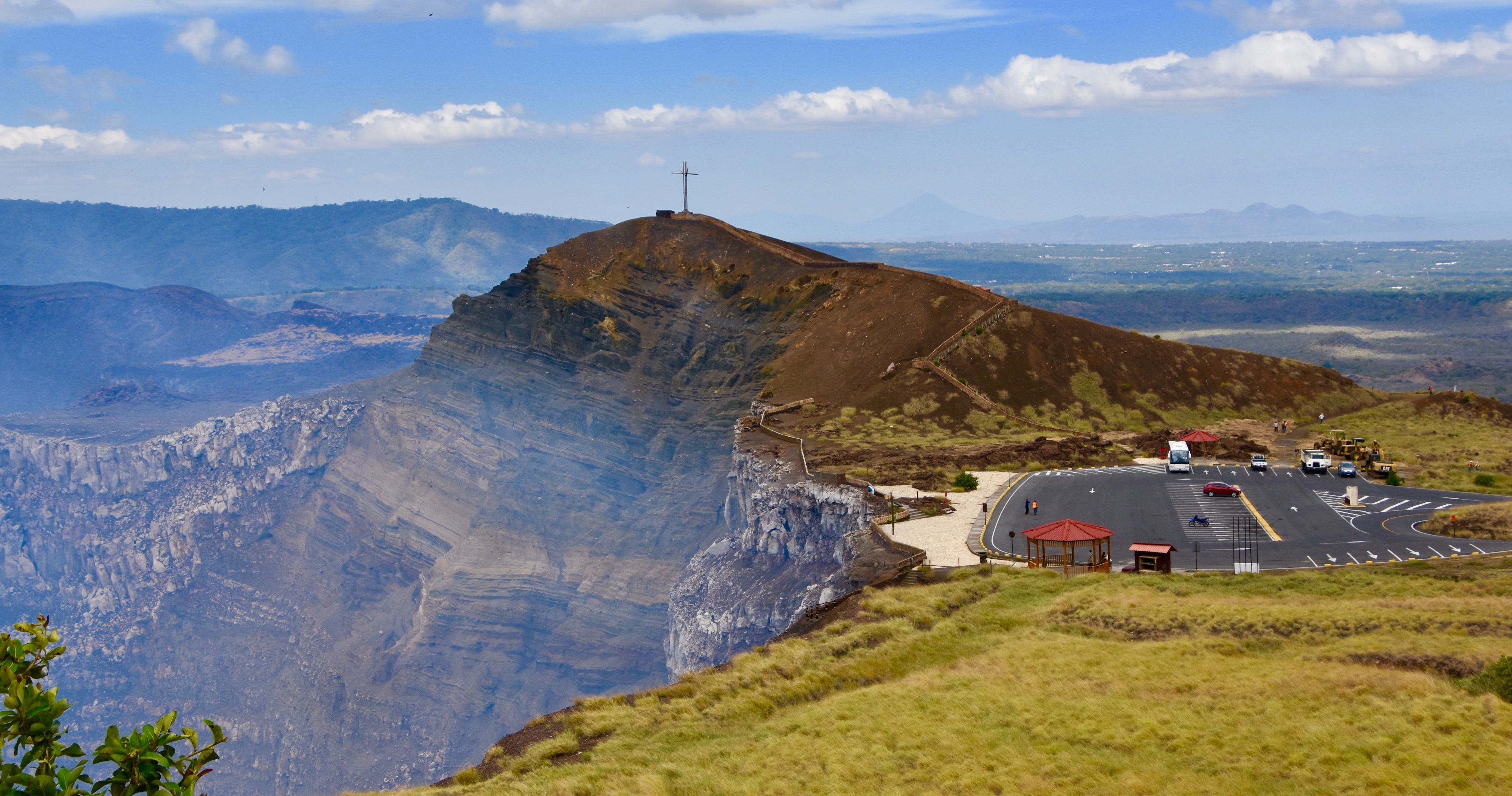
And of course everyone will want a shot of themselves at the edge of the Gates of Hell.
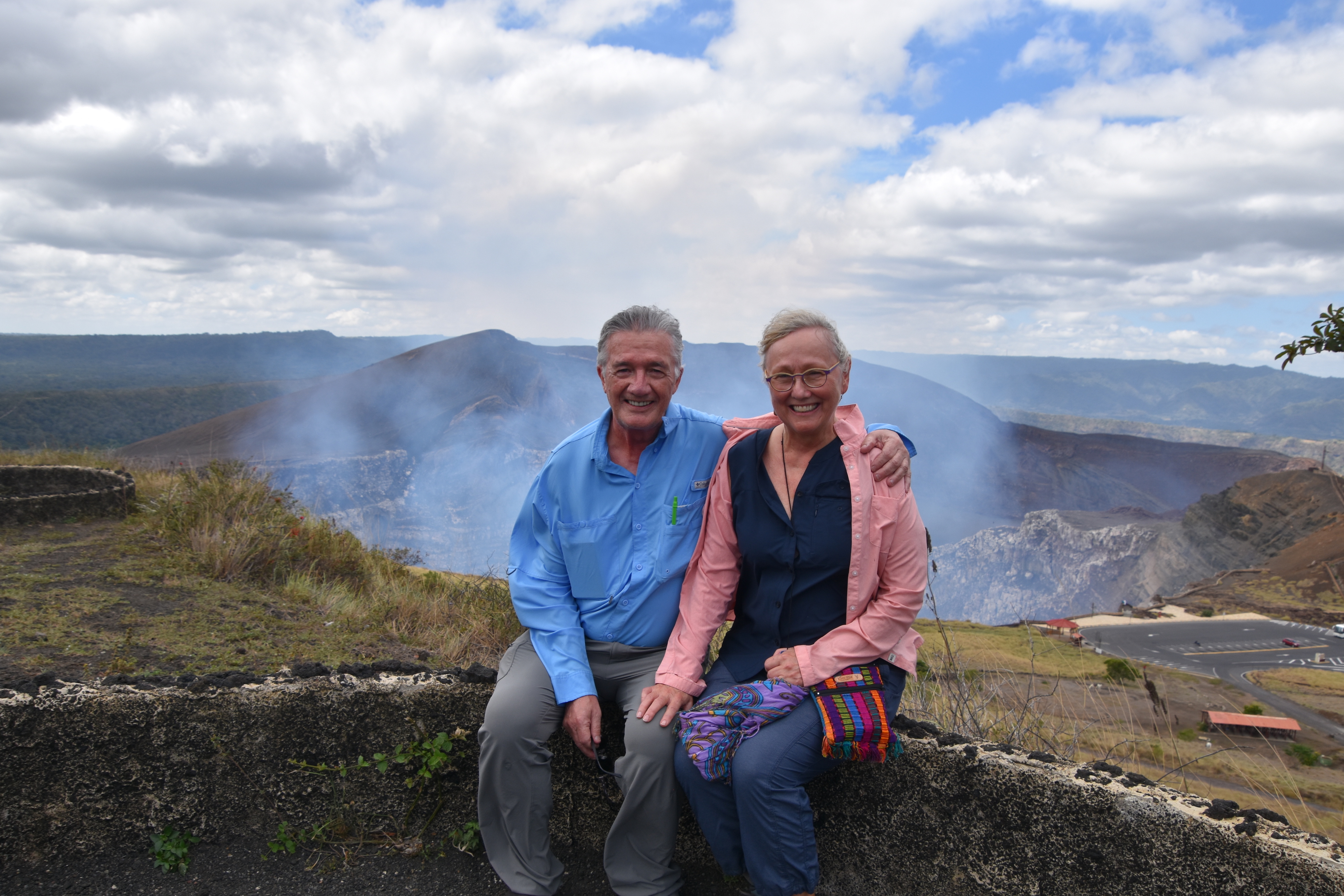
Lastly something completely timely. See that rope stretching across part of the crater. On March 4 Nik Wallenda, last of the famed Flying Wallendas will attempt an 1,800 foot crossing of Masaya which will be broadcast live on ABC. During our visit preparations were well underway to get the tightrope properly positioned. I certainly have March 4th marked on my calendar to find out if Nik makes it across or goes straight to hell.
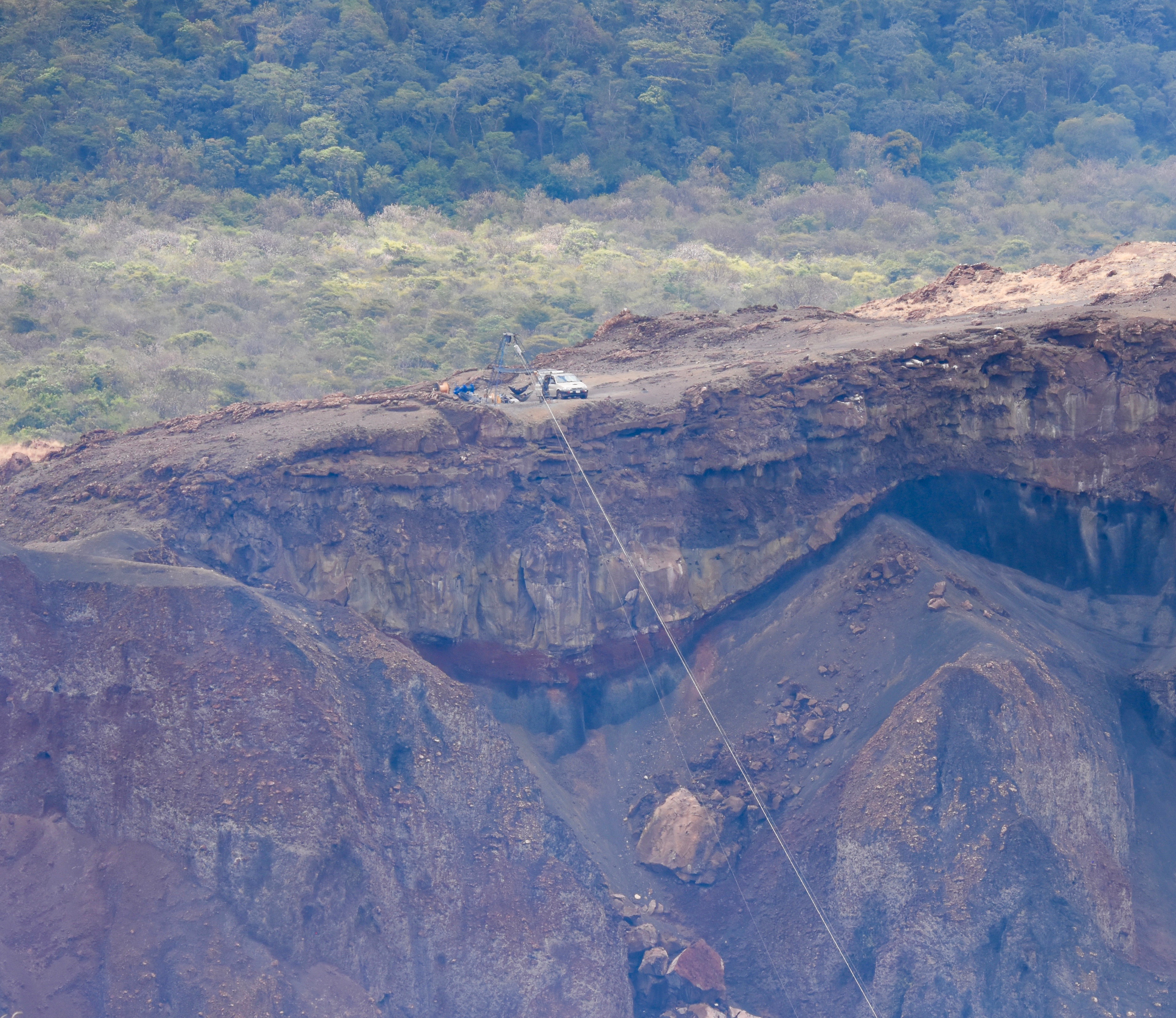
I’m pleased to report on this update that Nik did make it and here’s a link to the event.
Next time I will keep my promise and we’ll get to Ometepe Island.

